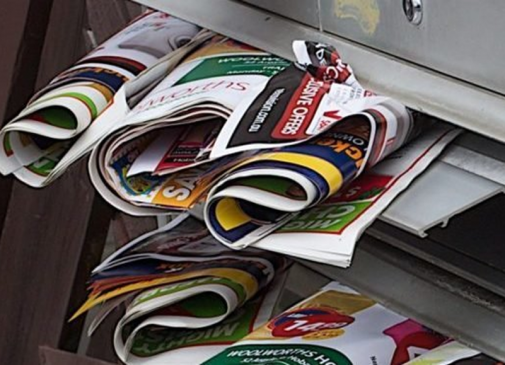Major retailers are struggling to give up paper, which is very popular with consumers, especially in rural areas. The digital comes in reinforcement.
Simple epiphenomenon or beginning of a bottom slide? Monoprix (Casino Group) has just announced that it has completely abandoned the distribution of its paper flyers. Deleting 30 million units per year and 2,400 tons of paper for its Monoprix (314 sites) and Monop '(182) stores for environmental reasons. "The vast majority of prospectuses - 80 to 90% - were discarded without even being read," explains Régis Schultz, president of Monoprix, who wants to stop "this huge mess." The boss says he is "ready to face" the decline in turnover that can generate, but estimates that prospectuses generate only 10 to 15% of in-store traffic. They will only stay online. Two million copies will still be printed to be available in store or "on demand".
| Monoprix is not the first sign to try to bury the good old flyer, or "printed unaddressed". In 2010, Michel-Edouard Leclerc announced with a crash that his flyers would have disappeared completely in ten years. A website had even been dedicated to the project: Zeroprospectus.com. A year from the deadline, it is clear that this is not the case. After a few tests, and the collapse of the average caddy, the sign reviewed its strategy. |
| The leaflet is progressing |
| So far, despite ecological, technological, or economic considerations, the prospectus has brazenly resisted digital. "That the prospectus disappears defeated by the digital: everyone is preparing, but yet, everyone continues the paper" observes an advertising. According to the Zero Waste association, the "stop advertising" campaign, the prospectus would represent between 800,000 and 900,000 tons of paper per year. A market increased slightly, as noted in the Médiapost Machine (subsidiary of La Poste), which saw its numbers increase from 9.353 to 10,450,000 copies between 2014 and 2017. The signs, they were careful to provide numbers to not inform the competition ... or tarnish their ecological image. But the UFC-Que Choisir, which was an increase of 2 to 2.3 kg of the annual weight flyers distributed in mailboxes between 2004 and 2018, says Leclerc, Carrefour and Système U are "on the podium of the advertising frenzy ". |
| More targeted communication |
| In the North and East, Supermarché Match (116 supermarkets) has never decreased its production, around 80 million flyers per year on average. "We can not do without it, it is a tool of creation of very adapted traffic, it is the reason for the promos: one has to be there, because our competitors are there", stresses Marion Van Mullem, the communication manager. Paper remains an old media anchored in habits, considered less intrusive than email, "a buying catalyst, bearer of the decision," Pascal Bovero abounds, general delegate of UNIIC (National Union of Industries of the printing and communication). 50 to 70% of the marketing budgets of the banners are still dedicated to paper. |
| If the "print" resists, it is at the cost of some transformations. Finished the time of distribution blindly. Supermarket Match targets rural areas. Advertisers personalize. "We made up to 40 versions of the same prospectus," says one of them. |
| A mix of paper and digital |
| Failing to take over, the digital has become complementary paper. "The consumer does his research on the Internet, but the paper triggers the purchase," says Pascal Bovero. Signboards play on both sides to reach both young urban and retired rural areas. They are just over 70 to use Bonial, a dematerialized flyer website created by a subsidiary of the Axel Springer group that displays 100,000 views per month. "We went from 800 to 1,000 leaflets online the first year in 2008 to just over 12,000 today and 3.5 million users," said Matthias Berahya-Lazarus, president of Bonial France. |
| This mix between digital and paper was illustrated this year at Christmas with the design of an "animated catalog" created by the northern start-up Vertical for the Auchan group's 197 stores. After downloading the Auchan Kids application on his smartphone, the customer could view the game in 3D and make it work. One way, says Yoan Sarels of Vertical "to limit disappointments when you open the box at home on Christmas Day". |
| Nicole Buyse |










